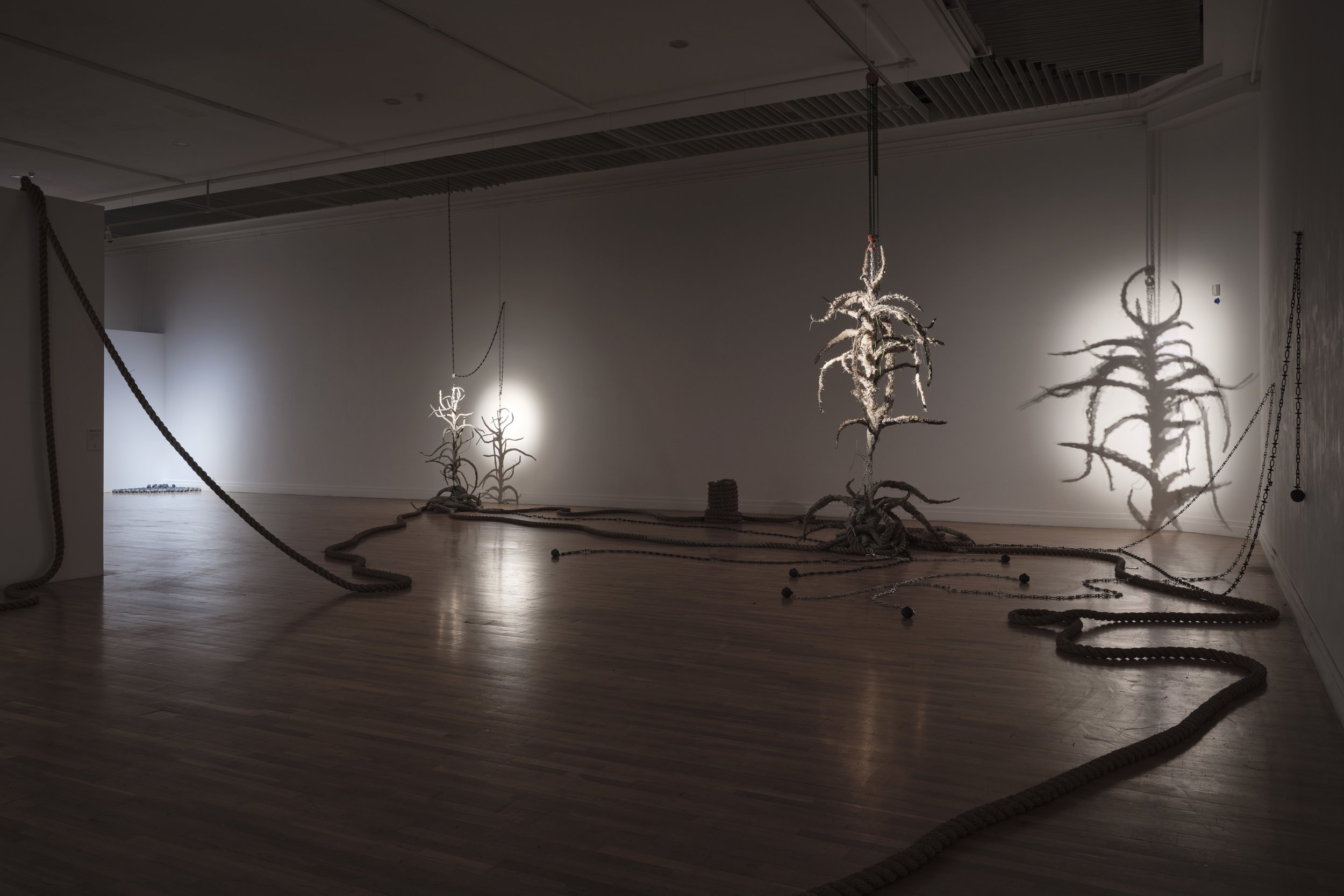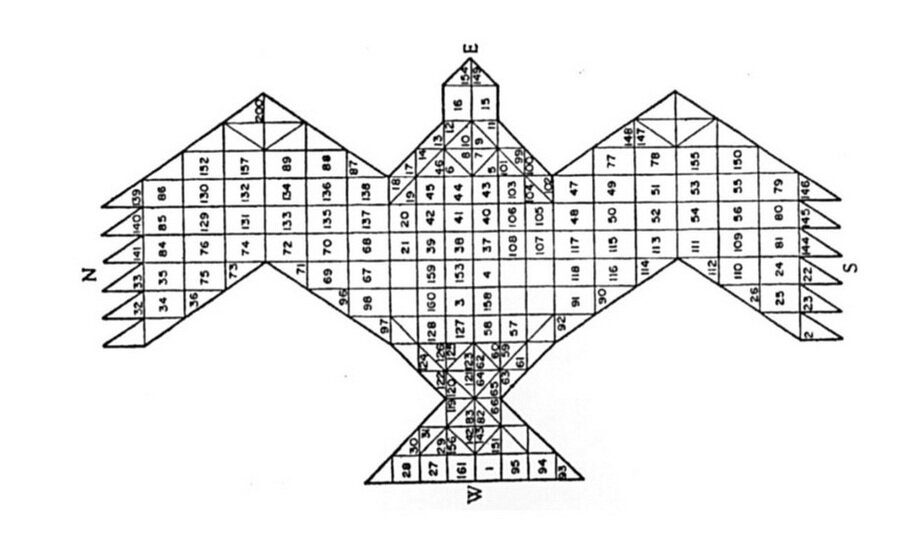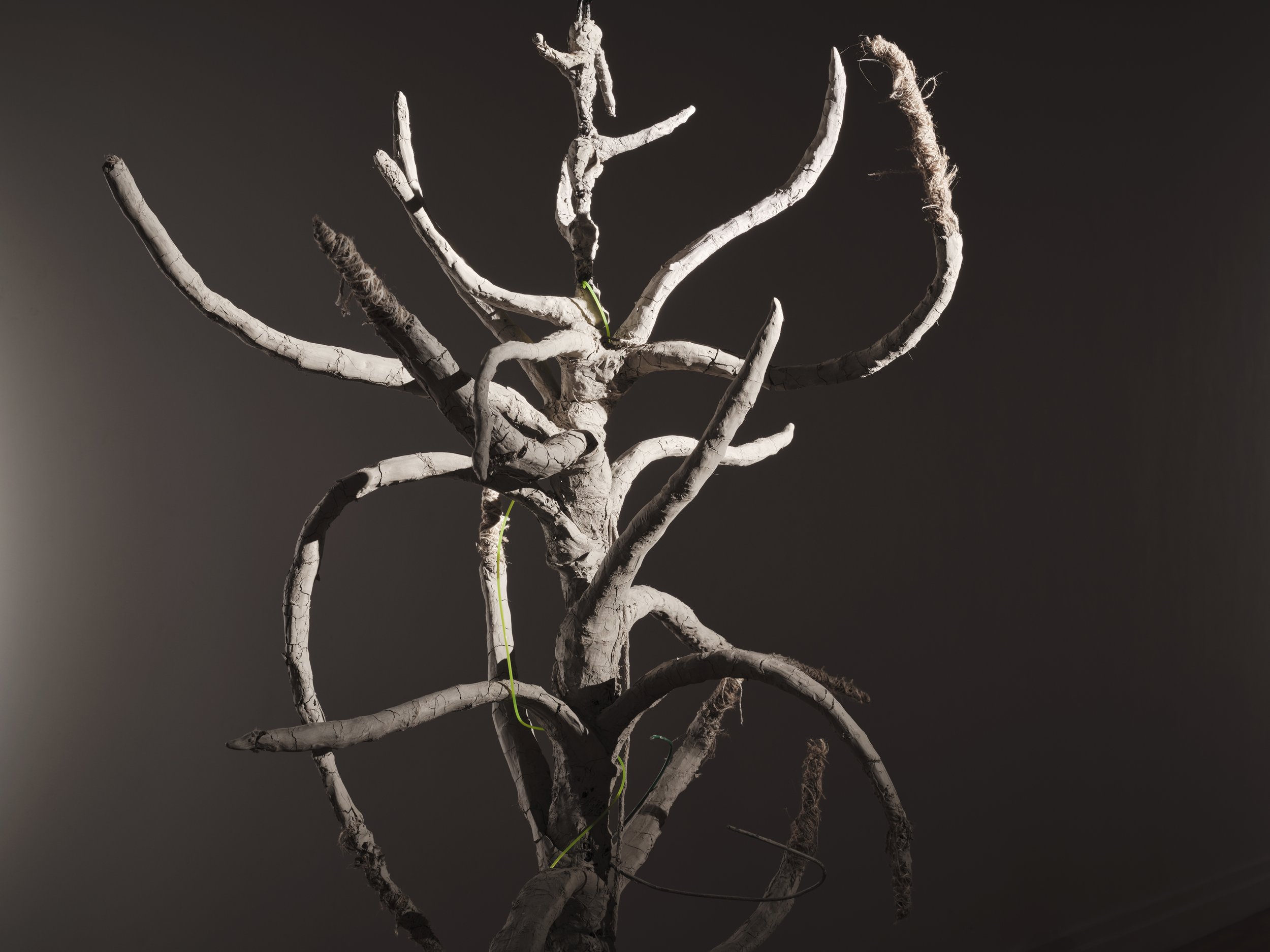
She grew the tree plant, she grew the plant, she grew the primeval mother: The plants of lamentation have sprouted, 2023
Title: She grew the tree plant, she grew the plant, she grew the primeval mother: The plants of lamentation have sprouted
curated by Patrick T Murphy, Gallagher Gallery, Royal Hibernian Academy, Dublin, IRL
16 February- 30 April 2023
]Being Haunted by the Breezes, Now How Will You Exist?
Photo credits: Ros Kavanagh
Being Haunted by the breezes, now how will you exist?
In Being Haunted by the breezes, now how will you exist?, Cecilia Bullo incorporates sculpture, sound and installation. Created specifically for the Gallagher Gallery, this new body of work explores the artist’s concerns around gender violence and ecofeminism. The work emerges from the artist’s urge to reconnect directly with material processes and the bodily act of making. Specifically, Bullo seeks to celebrate the return of the feminine and her/their personification and incarnation as a creatrix, fighter and destroyer. For the artist, the act of making becomes the work, involving an intense period of physical immersion and endurance. The processes of sculpture-making, including lost wax casting and mould making, become a physical language, a visual expression in and of itself. Being Haunted by the breezes, now how will you exist?, explores fictional, personal, archaeological and mythological narratives concerning Matrilinear ascendency. This includes Marija Gimbutas’ Kurgan hypothesis, which argues that European prehistoric culture was female-centred, and that the world was at peace when god was a woman. In the many layered narratives weaved in the work, the artist reverts to the tale of the gorgon Medusa, connecting it to transliterations of ancient Sumerian texts dating back to 2000 BC. To achieve this, Bullo engaged directly with Sumerian texts with Professor Martin Worthington at Trinity College Dublin, practising and performing a range of phonetic expressions of this ancient language. Phonemes, lexemes and words of this ancient language are brought to life, resonating and cascading throughout the gallery space. The rhizome as a motif and signifier has been a recurrent feature in Bullo’s practice. In particular, the aloe vera plant, renowned for its healing properties, holds particular significance for the artist. The plants used by her mother and her family through generations in the Mediterranean hold special significance. These de-territorialized/re-territorialized aloe vera plants were grafted from her mother’s garden in Italy and re-planted in Ireland, reminiscent of the artist’s own uprooted migrant background. In her speculative scenarios, Bullo also references and investigates Donna Haraway's theories on connectivity and tentacular-thinking as a critical reflection that involves reimagining and learning new ways to live. Like Haraway, Bullo asks us to ‘stay with the trouble while relating and heeding to a damaged and dying planet, as damaged beings. Additionally, the myth of the Medusa is recontextualized through Helen Cixous’s form of écriture féminine that disrupts and disavows patriarchy. Like Cixous, the act of making becomes an exhortation to re-imagine new forms of relations to each other and our world. In the artists’ own words: ‘Envisaged as archeological dystopian assemblages, these works to me are apotropaic sculpture-amulets and esoteric spaces, from which one can resist the repressive discriminatory framework of patriarchal culture.’









